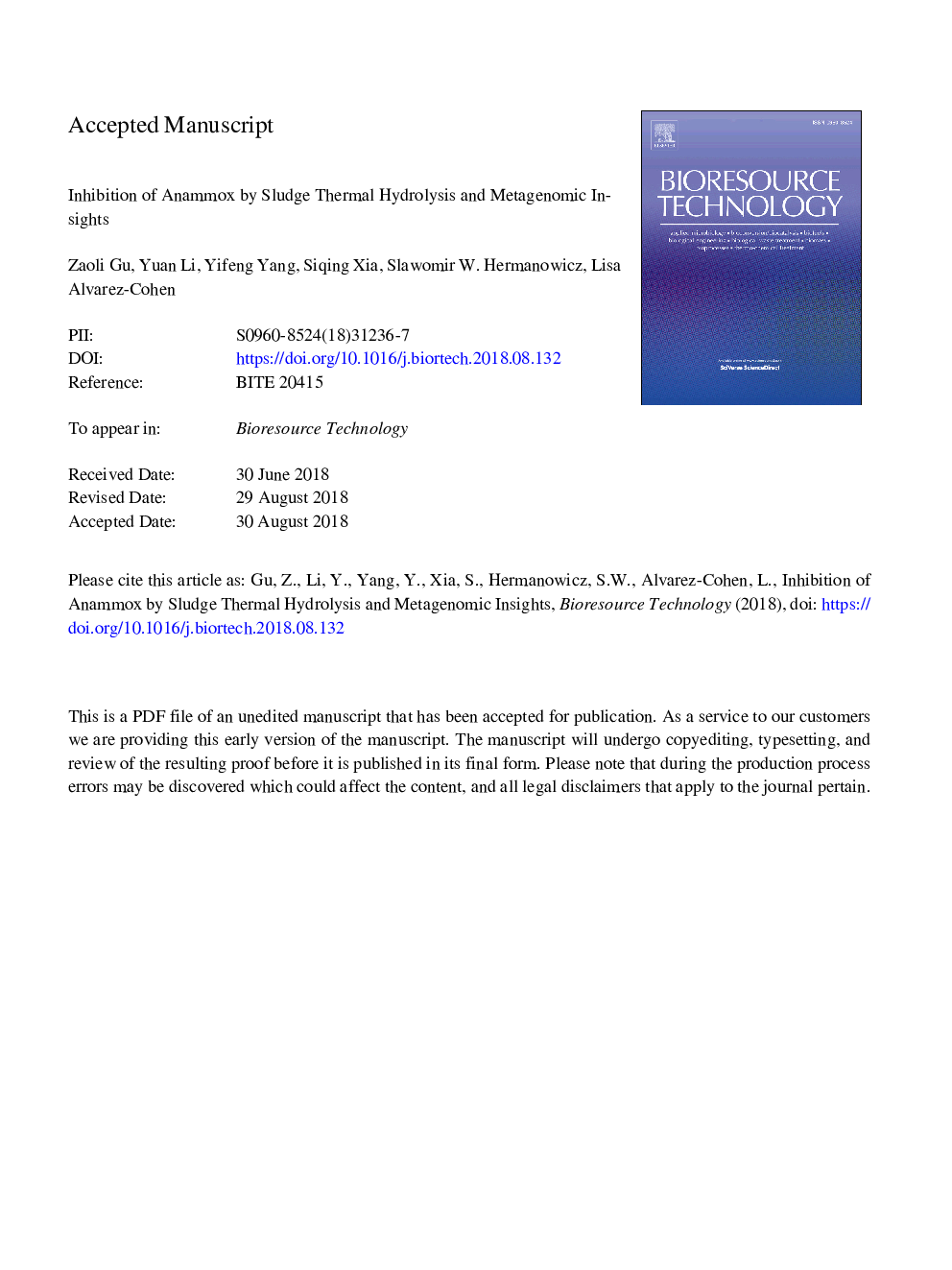| Article ID | Journal | Published Year | Pages | File Type |
|---|---|---|---|---|
| 10146395 | Bioresource Technology | 2018 | 35 Pages |
Abstract
Anaerobic ammonium oxidation (anammox) would be a feasible treatment method for thermal hydrolysis processed sidestream (THPS). Short-term study revealed that the 1/20 diluted THPS caused a 28% decrease of specific anammox activity. The MBR achieved a volumetric nitrogen loading rate of 3.64â¯kg/(m3·d) with undiluted regular sidestream (RS) fed, while the reactor crashed with 70% diluted THPS as feed. The ratio of produced NO3â-N to consumed NH4+-N also decreased compared with RS feeding. Candidatus brocadia was the major anammox bacteria species with the average abundance of 33.3% (synthetic wastewater), 6.42% (RS) and 2.51% (THPS). The abundances of metagenome bins for dissimilatory nitrate reduction to ammonium (DNRA) increased in the system with THPS compared with RS. The reason for the inhibition of anammox by THPS could be the high content of organic carbon in THPS, which caused the over-population of heterotrophic bacteria, i.e. DNRA bacteria, leading to anammox bacteria washout.
Keywords
Related Topics
Physical Sciences and Engineering
Chemical Engineering
Process Chemistry and Technology
Authors
Zaoli Gu, Yuan Li, Yifeng Yang, Siqing Xia, Slawomir W. Hermanowicz, Lisa Alvarez-Cohen,
